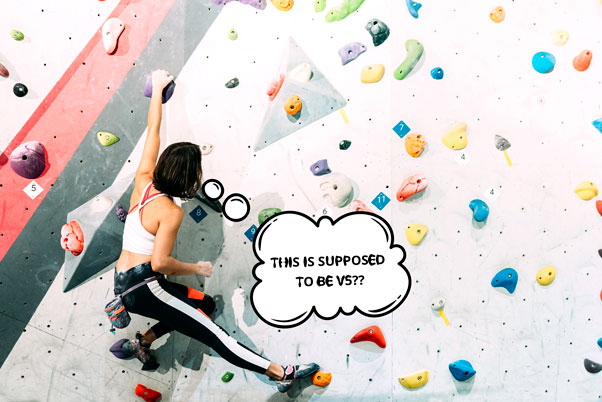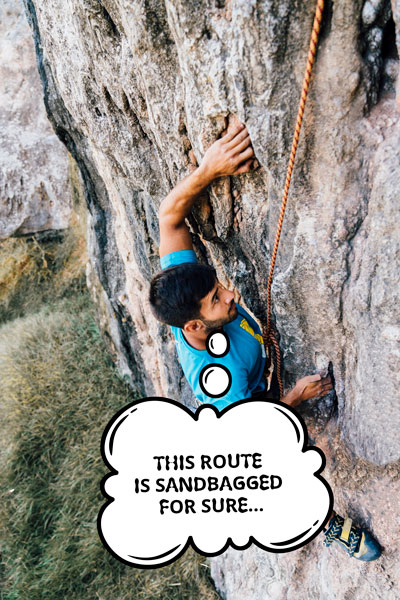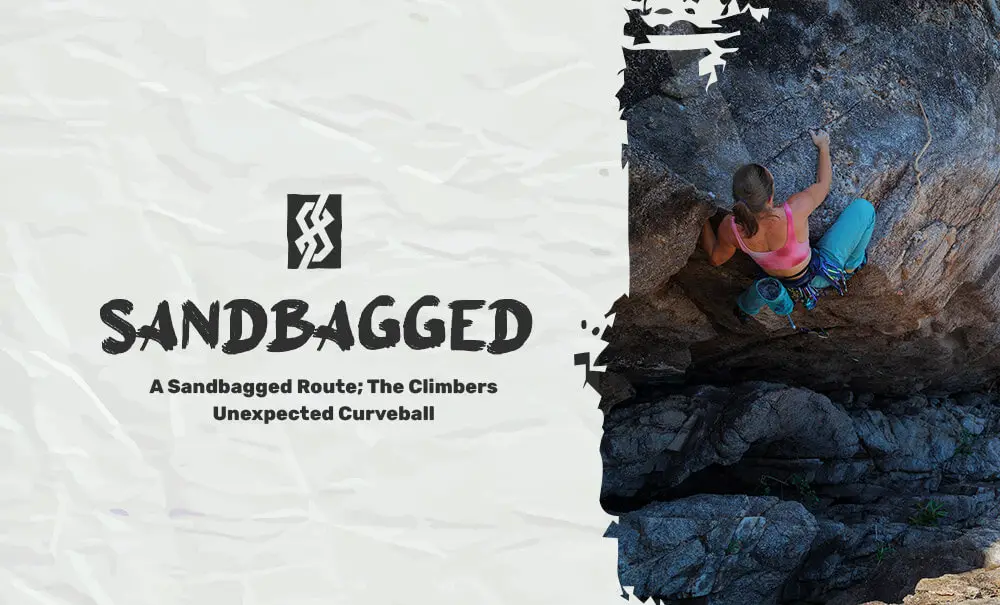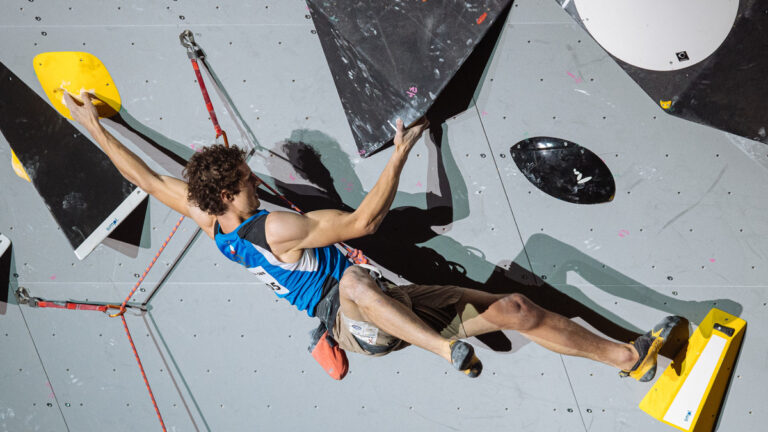What Does Sandbag In Climbing? Slang Explained
Sandbag In Climbing: Have you ever heard a climber say something like, “The route is protected by sandbags” or “The rock is trampled on sandbags”? Sandbags are a common term in climbing, so if you’re new to climbing, it will be helpful to know the full meaning.
So what do sandbags mean in rock climbing? We will see…
What does “sandbag” mean in climbing?
Sandbagging is a climbing term used when a slope is considered too soft. This means that the rock challenge or climbing route is much more difficult than its steepness suggests.
Let’s start with the example of rock climbing.
Let’s say you can easily view or flash most 5.9 (f5c) versions, but you have difficulty sending a certain 5.7 (f5a) track, which means the track is locked forever.
Or here is an example of stones.
You can easily use the V5 at your local gym, as well as most other commercial gyms. But on a trip to Europe, you visited a small gym specializing in rock climbing and realized you couldn’t even do 6a (V3) there.
In this case, the gym will most likely attempt to match the ratings of the indoor units with those of the outdoor units. This is a rare practice and is only practiced in some hardcore gyms as most gyms want to cater to beginners and therefore have very good ratings especially for beginners, making progress easier.

What is the origin of the word “sandbag” in rock climbing?
The term “sandbag” was popularized in mountaineering by climbers who imagined climbing a route with a sandbag attached to their harness. There is little information on when the term “sandbag” or “sandbag” was first used in rock climbing. All we know is that it is one of the most commonly used terms in modern climbing.
Why are sandbags needed?
Sand roads and rock climbing problems exist for several reasons:
- Personal note on the climb.
- Experienced climbers often misclassify routes.
- Course leaders misjudge low grades
- The classic routes have much more difficult levels than today.
- You are using the wrong trial version.
Climbing grades are subjective
Sandbags exist primarily due to the subjective nature of classification. What one climber may consider a rating of 5.9, another climber may rate as 5.8 or even lower. Every climber has a different skill level. Some think it’s terrible, while others think it’s very difficult.
Experienced climbers often misjudge routes
Some climbers are so experienced that they cannot distinguish between routes rated 5.7 – 5.8 – 5.9, etc. As a result, they may give a very low rating to a course that seems too easy for their experience level.
This isn’t necessarily done for the reasons you might suspect (such as ego-stroking), but is probably done unconsciously. The course seemed so simple to them that, in their opinion, there could not be a more complex qualification.
The screenshot above shows a funny interaction I found in a post on Reddit. One person notes that the treetop trail in NRG is “protected” and was originally rated 5.7 and is now rated 5.10a. Only one of the boys commented that his father had made the first ascent of the route in question and gave him a score of 5.7 because he had never climbed higher than 5.7 before.
Course leaders misjudge low grades
Although sandbags are commonly used in outdoor climbing, they can also be used in indoor climbing gyms and bouldering gyms.
This is consistent with our previous argument that experienced climbers cannot estimate lower estimates.
Your climbing gym’s route planners are experienced climbers who may not have a very clear idea of what the lower levels (e.g. V0 – V3) of the climbing gym should look like. Or what routes 5.8 to 5.10 should look like on a climbing wall.
For example, in my first bouldering room, the beginner bouldering blocks rated V0 to V3 (actually the source was 4 to 6a, but for the sake of this article, let’s stick to the V scale) were always full.
In many cases, V0 was more difficult than V1 or even its neighbor V2. I had problems with version 2, which seemed impossible, and with version 3, which seemed too easy. In this gym you really had to completely ignore the color coding and just read and solve the problems.
This is how I send my first V3 file. It seemed simple (and it was). Maybe it wasn’t worth it at the time, but that’s not the point.
What I mean is that it is all too easy for experienced climbers to associate problems/lower routes with a particular slope.
If an issue has just one wrinkle, my gym automatically rates it as V3 or higher. It doesn’t matter how simple the problem is.
The classic routes have more difficult levels

Climbing today is very different from that of the past. If you try old-fashioned methods that rely on the complexity of using raw results, they will seem very confusing.
In fact, the rating has become very low compared to what it was before. This is immediately clear to climbers who visit old-school crags like Gunks or Yosemite.
You are using the wrong trial version
Sandbagging cannot always be attributed to the first climber or climber. Sometimes (believe it or not) the problem is you, not the road.
This is what happens when you try to find a problem on the road or rock by thinking about the wrong beta. Maybe you lack a certain anchor and create an unnecessary core that makes the road feel like a sandbag?
If you play with sand on a climbing wall, always ask another climber to try before you go and give them the old “sandbag” excuse.
Is it dangerous to use sandbags?
Sandbags can be dangerous because they can cause climbers to attempt routes well beyond their skill level.
For example, if a novice sport climber attempted to achieve grades similar to those he was accustomed to on the Gunks or Yosemite multi-pitch routes, he would likely be very dangerous.
However, in most cases, climbers will not climb a route without proper research (at least I hope so). So I can’t imagine this is very common in real world scenarios.
Do sandbags make you a better climber?
In some ways, sandbag techniques can make you a better climber. This is because these methods push you to try something outside your comfort zone, which can be good in the long run.
Sometimes we underestimate our abilities. Or fear holds us back. A good sandbag can inspire us to excel and expand our abilities as mountain climbers.







